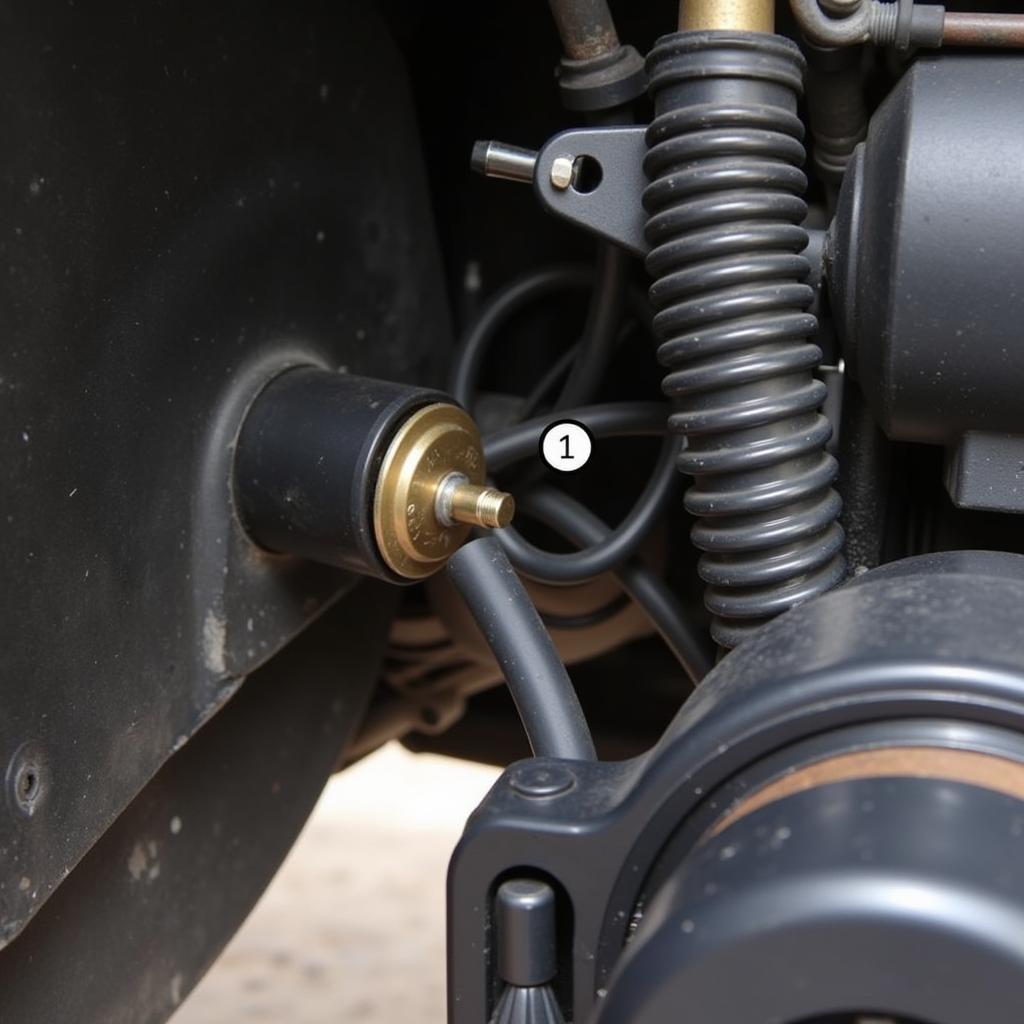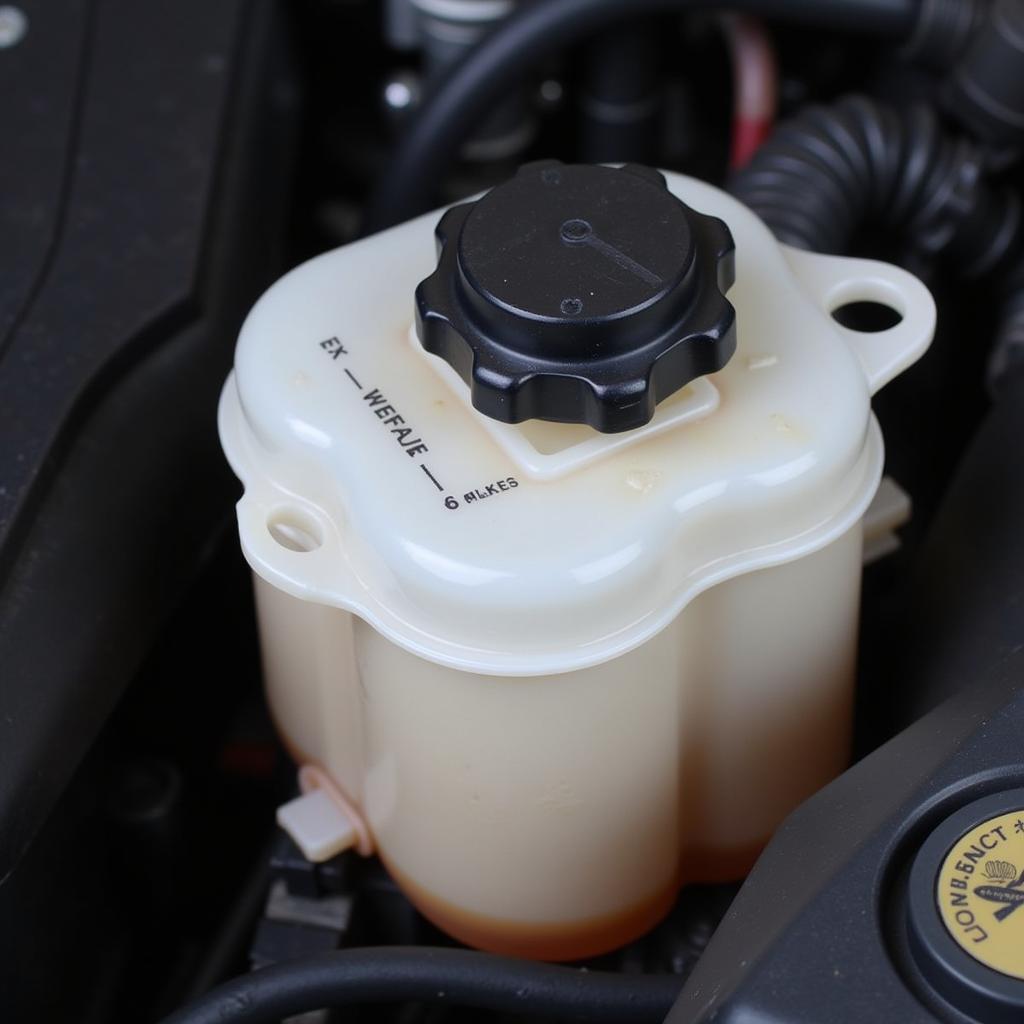The brake pressure differential warning switch, also commonly referred to as the brake pressure sensor, plays a crucial role in your vehicle’s safety system. It’s responsible for alerting you to potential problems within your braking system that could compromise your ability to stop effectively. Understanding how it works and why it might trigger a warning light can help you address brake issues promptly and ensure your safety on the road.
What Does a Brake Pressure Differential Warning Switch Do?
 Brake Pressure Differential Switch Location
Brake Pressure Differential Switch Location
Your car’s braking system is divided into two hydraulic circuits. The brake pressure differential warning switch, often located near the master cylinder, continuously monitors the pressure in these circuits. When you apply the brakes, the switch compares the pressure in both circuits. If the pressure difference exceeds a predetermined level, indicating a potential problem like a leak or malfunctioning component, the switch activates, illuminating a warning light on your dashboard.
Common Causes of Brake Pressure Differential Warning Switch Activation
While a faulty switch itself can trigger the warning light, it’s more common for the activation to indicate an issue within the brake system. Here are some frequent culprits:
- Brake Fluid Leak: A leak in the brake lines, hoses, or cylinders can lead to pressure differences between the circuits.
- Worn Brake Pads or Shoes: Severely worn brake pads or shoes require more brake fluid to function correctly, potentially causing pressure imbalances.
- Malfunctioning Master Cylinder: Issues within the master cylinder, such as a leaking seal, can disrupt the pressure balance between the two brake circuits.
- Air in the Brake Lines: Air trapped within the brake lines can compress, leading to inconsistent pressure distribution and triggering the warning switch.
Troubleshooting a Brake Pressure Differential Warning Light
“A glowing brake pressure differential warning light should never be ignored,” says automotive diagnostics expert, Michael Thompson. “It’s a clear sign that your vehicle requires immediate attention.”
If your brake pressure differential warning light illuminates, follow these steps:
- Check Your Brake Fluid Level: Park your vehicle on a level surface and inspect the brake fluid reservoir. If the fluid level is low, there might be a leak in the system.
- Inspect for Leaks: Visually examine the brake lines, hoses, and calipers for any signs of fluid leakage. Look for wet spots, drips, or damp areas.
- Avoid Driving: If you notice a leak or very low brake fluid, refrain from driving your vehicle and contact a qualified mechanic immediately.
Can I Drive with a Brake Pressure Differential Warning Light On?
Driving with an active brake pressure differential warning light is highly discouraged and potentially dangerous. The warning indicates a compromised braking system, which could lead to reduced braking efficiency, longer stopping distances, and an increased risk of accidents.
 Mechanic Inspecting Brake System
Mechanic Inspecting Brake System
Addressing the Issue: Remote Diagnostics and Software Solutions
In today’s technologically advanced automotive landscape, remote diagnostics and software solutions are playing an increasingly vital role in addressing brake pressure differential warning switch issues. Skilled technicians can remotely access your vehicle’s computer system to:
- Retrieve Diagnostic Trouble Codes: By analyzing the specific codes stored in your vehicle’s computer, technicians can pinpoint the root cause of the warning light activation.
- Run Software Updates: In some instances, a simple software update to your vehicle’s braking system can resolve communication errors or optimize system performance.
- Conduct Remote Programming: If the brake pressure differential warning switch requires replacement, remote programming can ensure the new component seamlessly integrates with your vehicle’s existing systems.
Conclusion
The brake pressure differential warning switch is an essential component of your vehicle’s safety system. Understanding its function and the potential causes behind its activation empowers you to address brake issues promptly and prioritize your safety on the road. Regular maintenance, timely inspections, and leveraging advanced diagnostic tools are crucial to maintaining a reliable and responsive braking system. If your brake pressure differential warning light illuminates, seeking professional assistance is essential to diagnose and rectify the underlying problem, ensuring safe and confident driving.

